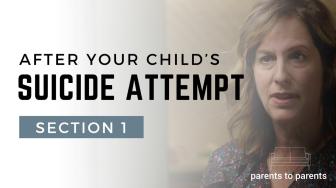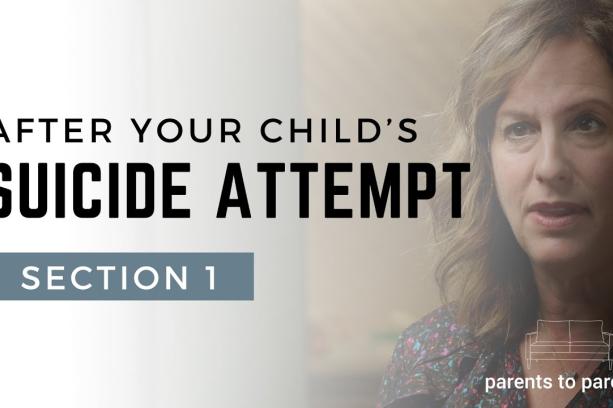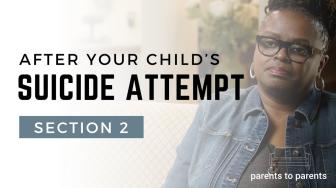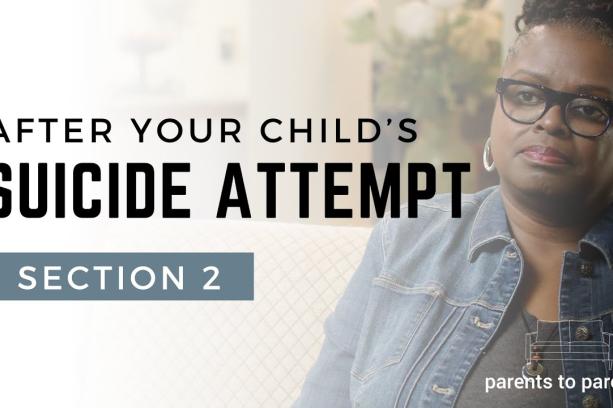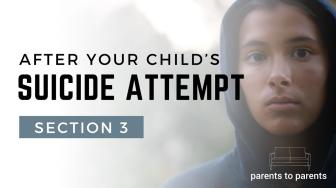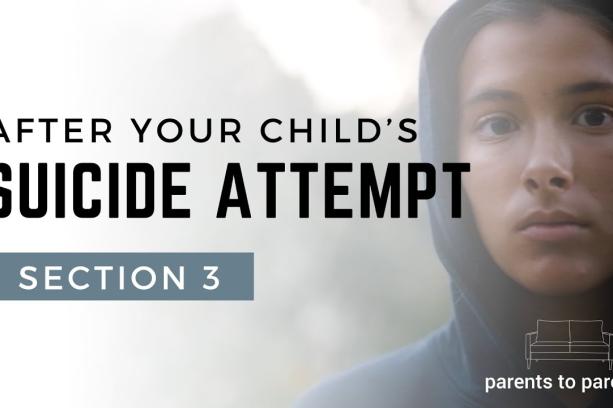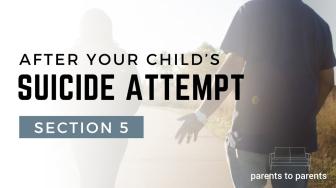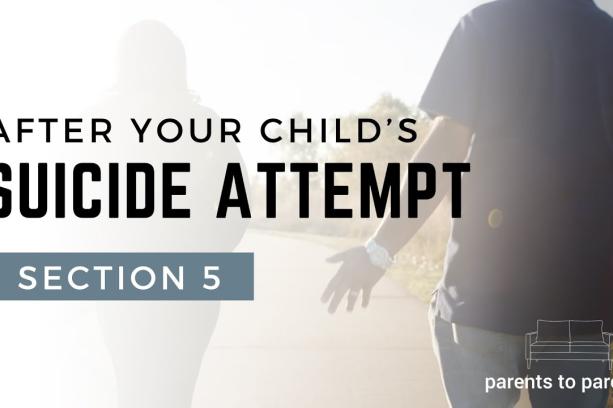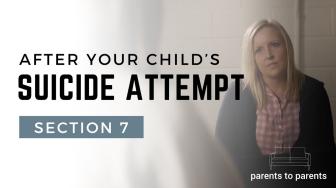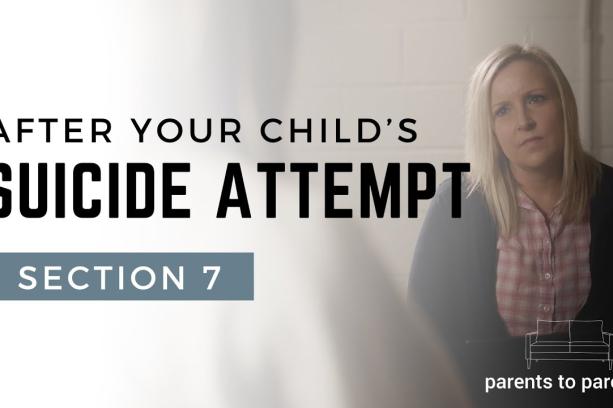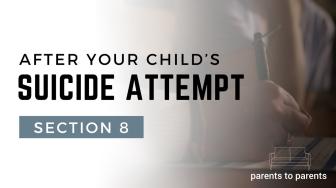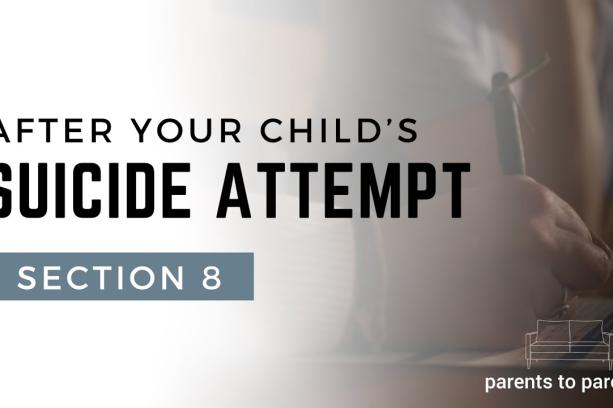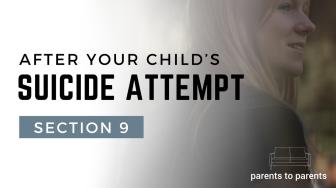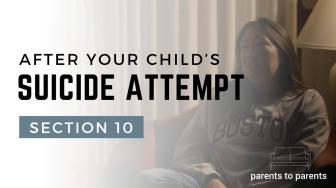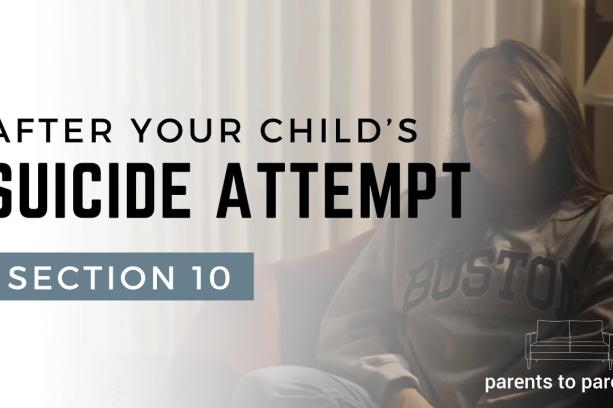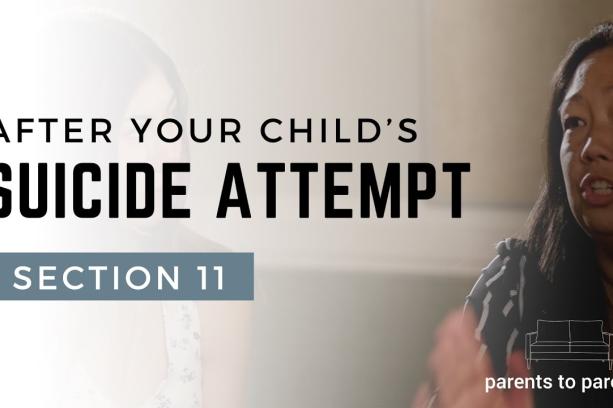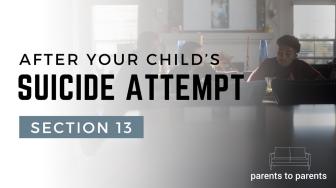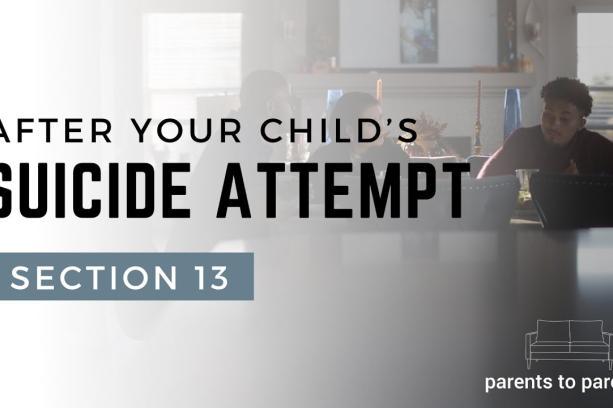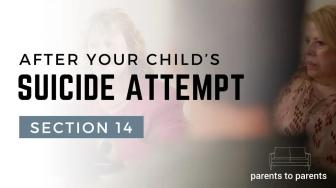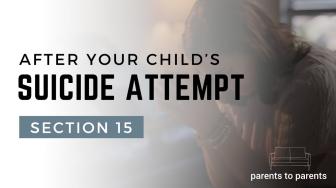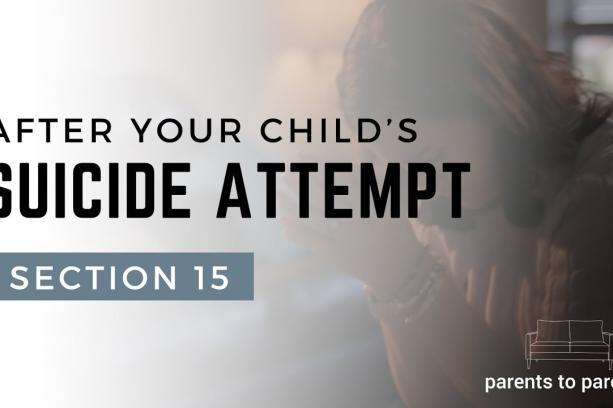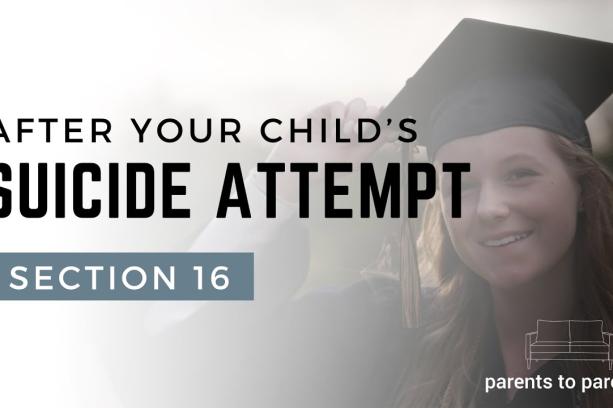After Your Child’s Suicide Attempt
After Your Child’s Suicide Attempt is a one-hour film providing support and guidance for parents and caregivers after their child has attempted suicide.
About the Film
The aftermath of a child’s suicide attempt can be a deeply confusing, scary, and emotional time for parents and caregivers. While healthcare professionals, school leaders, and others may address many of their questions, hearing directly from parents who have been there can be especially supportive.
"Many parents and caregivers have needed this for a very, very long time" — Viewer
After Your Child’s Suicide Attempt is a free resource for providers, schools, and community organizations to share with parents and caregivers after their child has attempted suicide. The one-hour film answers questions often raised by caregivers and describes best practices in suicide care that parents can go back to in the days and weeks following their child’s suicide-related crisis. The film is not meant to replace care from providers but rather to augment care from professionals, as caregivers can return to it again and again.
How to Share
Audience
After Your Child’s Suicide Attempt is helpful for any parent or caregiver whose child has recently made a suicide attempt or talked about suicide. Emergency departments, inpatient hospitals, residential care, crisis services, mobile crisis units, community mental health providers, pediatricians, schools, substance misuse professionals, peer advocates, faith leaders, and other community organizations can all play a role in adding the video to their toolbox of supports for caregivers.
Film & Resources
You may directly share the film with parents and caregivers by linking them to the Watch the Film tab above. In addition to the film, we have curated a set of resources for parents and caregivers as well as the healthcare providers, educators, and community organizations who support them. These resources can be accessed via the More Resources tab.
Additional Materials
The following tools are intended to help start a conversation with parents and caregivers who may be able to benefit from the After Your Child’s Suicide Attempt film:
- After Your Child's Suicide Attempt One-Pager: This one-page informational material can be given to care providers to explain the content and purpose of the After Your Child's Suicide Attempt film.
- After Your Child's Suicide Attempt Flyer: This flyer can be posted in community areas accessible to parents, care providers, and other supporters.
After Your Child’s Suicide Attempt was created jointly by Zero Suicide at EDC and Parents to Parents, a non-profit organization that offers resources to caregivers whose child is struggling with mental health challenges or concerns. This film was made possible in part by the generous support of the Four Pines Fund.
Watch the Film
Learning that your child is having thoughts of suicide or has made an attempt can be overwhelming. But you are not alone. After Your Child’s Suicide Attempt captures many of the questions and feelings that caregivers may experience.
"Very tactile and tangible. When any of us go through a traumatic experience, we want to know what we have to do, what do I do next?" — Viewer
The parents interviewed for this film have all had a child in suicidal crisis and understand the complex emotions and challenges that follow. They are joined by experts in suicide care and prevention. Together, their insights offer caregivers practical guidance for the days and weeks after an attempt and—most importantly—messages of hope. People do get better, recover, and create lives worth living.
The intention of this film is to:
- Describe what to expect in the days and weeks following a child’s suicide-related crisis
- Provide information on how to access effective treatment
- Offer insights on how parents and caregivers can best support their child and family
- Validate the feelings that can accompany a child’s suicide-related crisis
- Direct parents and caregivers to additional supportive resources
Film & Chapters
The film is one hour long. You may want to watch the film in its entirety the first time. It is also available in chapters for you to return to specific sections.
Return to a Specific Chapter
Introduces parents of children who have been through a suicidal crisis. 90% of those who attempt suicide do not go on to die by suicide.
Acknowledges complex and challenging emotions of caregivers: guilt, panic, fear, numbness, feeling like a failure.
Highlights the factors that may contribute to a child’s suicidal thoughts, and that parents’ anger is at the situation, not their child.
Delves into common feelings of caregiver guilt and the myth that good parents would not have children who attempt suicide.
Conveys that suicidality is like a storm in a young person’s head and highlights teen brain development as a factor.
Highlights parental rights and limitations of consent; provides advice to caregivers of young people over 18.
Explains what a safety plan is and the importance of decreasing access to methods the child mentions having considered.
Acknowledges fear and provides advice to caregivers on engaging with and supporting their child after a suicidal crisis.
Provides practical steps on aftercare appointments with different kinds of providers, things to research and therapies to ask about, how parents can seek support for themselves.
Offers strategies for caregivers to connect with their child such as safety scale, reflective listening, ways to empathize and create paths for open sharing.
Provides examples and approaches for parents to ask their child if they are suicidal, and to listen empathetically.
Highlights the need for all caregivers to be on the same page, provides guidance for including siblings in the conversation, encourages asking the child who they are ok sharing with.
Offers practical advice for parents to advocate for their child with schools, as well as balancing caring and safety with trusting their child to engage in activities they enjoy.
Provides concrete ideas for how caregivers can take care of themselves and find peer supports.
After the Film
We Want to Hear from You
After watching the film, please complete this 5-minute survey. Your responses can help us improve this and future resources. All survey responses gathered here are confidential and will only be shared in aggregate without identifying information when presented publicly. Thank you in advance for your participation.
Get More Support
We have curated a set of resources for parents and caregivers as well as the healthcare providers, educators, and community organizations who support you.
Spread the Word
If you would like to help spread the word about the film, we have recommendations and resources available.
After Your Child’s Suicide Attempt was created jointly by Zero Suicide at EDC and Parents to Parents, a non-profit organization that offers resources to caregivers whose child is struggling with mental health challenges or concerns. This film was made possible in part by the generous support of the Four Pines Fund.
More Resources
The following resources are available for parents and caregivers after a child’s suicide attempt, as well as for providers, schools, and community organizations that support them. They may be used alongside After Your Child’s Suicide Attempt.
After Your Child’s Suicide Attempt was created jointly by Zero Suicide at EDC and Parents to Parents, a non-profit organization that offers resources to caregivers whose child is struggling with mental health challenges or concerns. This film was made possible in part by the generous support of the Four Pines Fund.


